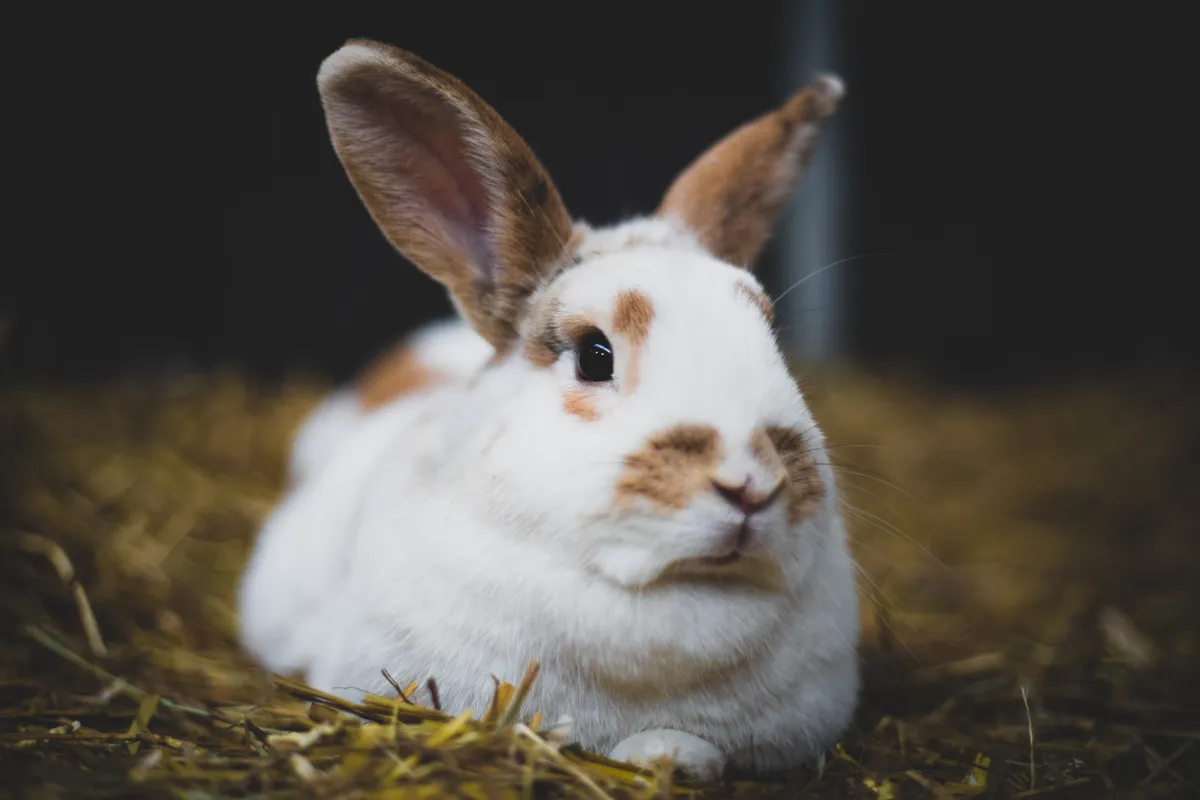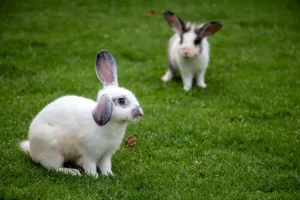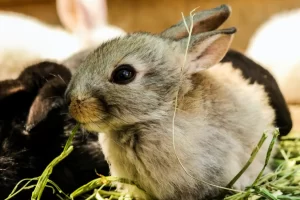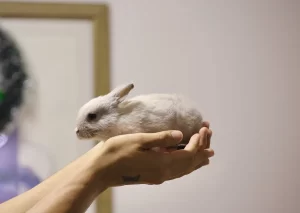Are you wondering why your rabbit is shedding so much? Don’t worry, it’s completely normal!
In this article, we’ll explore the reasons behind your rabbit’s shedding and provide you with valuable information on how to manage it.
From understanding their natural shedding process to the impact of seasonal factors and stress, we’ve got you covered.
We’ll also discuss the role of diet and nutrition, as well as offer grooming tips to help you keep your rabbit’s coat healthy and beautiful.
In This Article
- 1 Key Takeaways
- 2 Understanding Rabbit’s Natural Shedding Process
- 3 Seasonal Factors Affecting Rabbit Shedding
- 4 Stress and Rabbit Shedding: What’s the Connection
- 5 Diet and Nutrition: Key Factors in Rabbit Shedding
- 6 Grooming Tips to Manage Rabbit Shedding
- 7 When to Seek Veterinary Assistance for Excessive Rabbit Shedding
- 8 Frequently Asked Questions
- 8.1 How Often Do Rabbits Shed?
- 8.2 Can Rabbits Experience Hair Loss During Shedding?
- 8.3 How Long Does the Shedding Process Typically Last for Rabbits?
- 8.4 Can Rabbits Shed More During Certain Times of the Year?
- 8.5 Are There Any Specific Grooming Tools or Techniques That Can Help Manage Rabbit Shedding?
- 9 Conclusion
Key Takeaways
- Rabbit shedding is a natural process for them to get rid of old and damaged fur and make way for new fur growth.
- Seasonal factors such as temperature, daylight hours, and hormonal changes can affect rabbit shedding.
- Stress can disrupt a rabbit’s normal shedding cycle and lead to excessive shedding or fur loss.
- Proper nutrition, grooming, and regular veterinary assistance are important for managing rabbit shedding and ensuring their overall well-being.
Understanding Rabbit’s Natural Shedding Process
Do you understand why your rabbit’s natural shedding process is happening?
It’s important to know that rabbit hair loss is a common occurrence and part of their natural cycle. Shedding is a natural process for rabbits to get rid of old and damaged fur and make way for new growth.
There are several common causes of shedding in rabbits. One of the main reasons is seasonal changes. As the weather gets warmer, rabbits shed their thicker winter coat to adapt to the changing temperatures.
Another common cause is hormonal changes, especially in intact rabbits. Pregnancy, lactation, and changes in hormones can trigger shedding.
Additionally, stress, poor nutrition, and certain medical conditions can also contribute to excessive shedding in rabbits.
Understanding these common causes can help you better care for your rabbit and ensure their overall well-being.
Seasonal Factors Affecting Rabbit Shedding
Have you noticed any changes in your rabbit’s shedding patterns during the current season? Seasonal changes can have a significant impact on your pet rabbit’s fur. Understanding these changes and implementing appropriate grooming techniques is essential for their overall health and well-being.
Here are four key factors to consider:
- Temperature: As the seasons change, rabbits naturally shed their fur to adapt to the temperature. Warmer weather prompts them to shed their thick winter coat for a lighter one.
- Daylight hours: The length of daylight affects a rabbit’s shedding patterns. Longer daylight hours trigger increased shedding.
- Hormonal changes: Rabbits experience hormonal fluctuations throughout the year, leading to shedding. These changes are more prominent during the spring and fall seasons.
- Indoor environment: Even if your rabbit lives indoors, they can still be affected by seasonal shedding. Ensure a consistent temperature and provide proper grooming to support their natural shedding process.
Stress and Rabbit Shedding: What’s the Connection
Are you wondering how stress affects your rabbit’s shedding patterns and fur health? Stress can have a significant impact on your furry friend’s overall well-being, including their shedding. When a rabbit experiences stress, their body releases cortisol, a stress hormone that can disrupt their normal shedding cycle. This can lead to excessive shedding or even patches of fur loss. It’s important for rabbit owners to understand how to manage stress in their pets to ensure healthy fur growth.
Here is a table outlining some common stressors for rabbits and tips for stress management:
| Stressors | Stress Management Tips |
|---|---|
| Loud noises | Provide a quiet and calm environment |
| Changes in routine | Maintain a consistent schedule |
| Lack of social interaction | Spend quality time with your rabbit |
| Predators or other pets nearby | Ensure a safe and secure living space |
Diet and Nutrition: Key Factors in Rabbit Shedding
Are you feeding your rabbit a balanced diet rich in essential nutrients? Proper nutrition is crucial for maintaining a healthy shedding cycle and promoting optimal fur growth. When it comes to rabbit shedding, there are common causes and solutions to consider.
Here are four key factors to help you understand the importance of diet and nutrition in preventing excessive shedding:
- High-quality hay: Make sure your rabbit has access to fresh, high-quality hay, such as Timothy or orchard grass, which provides essential fiber for proper digestion and helps prevent hairballs.
- Fresh vegetables: Incorporate a variety of fresh vegetables into your rabbit’s diet, such as leafy greens and carrots, to provide essential vitamins and minerals that support overall health and coat condition.
- Balanced pelleted diet: Choose a high-quality rabbit pellet that’s specifically formulated to meet your rabbit’s nutritional needs. Avoid low-quality pellets that are high in fillers and low in essential nutrients.
- Adequate water intake: Ensure your rabbit has access to fresh, clean water at all times. Proper hydration helps maintain a healthy coat and aids in the shedding process.
Grooming Tips to Manage Rabbit Shedding
To manage rabbit shedding, make sure you regularly brush your furry friend’s coat to remove loose fur and prevent matting. Rabbit grooming techniques are essential in preventing hairballs in rabbits.
Brushing your rabbit’s fur helps to remove excess fur that they naturally shed, which can lead to the formation of hairballs if ingested. Hairballs can cause gastrointestinal blockages and discomfort for your rabbit. By incorporating regular grooming into your rabbit’s routine, you can minimize the amount of loose fur that they ingest while grooming themselves. This will greatly reduce the risk of hairballs and promote a healthy digestive system.
Additionally, brushing your rabbit’s coat helps to maintain its cleanliness and prevent the formation of mats, which can be uncomfortable for your furry friend. So, grab a soft brush and start grooming your rabbit regularly to keep their coat healthy and prevent hairballs.
When to Seek Veterinary Assistance for Excessive Rabbit Shedding
If you notice your rabbit excessively shedding and their fur becoming thin or patchy, it may be time to seek veterinary assistance. Excessive shedding in rabbits can be a sign of underlying health issues that require professional attention. Here are four common health issues associated with excessive rabbit shedding:
- Poor nutrition: Rabbits need a balanced diet to maintain healthy fur. If their diet lacks essential nutrients like vitamins and minerals, it can lead to excessive shedding.
- Parasites: External parasites like fleas, mites, or ticks can cause rabbits to shed excessively. These pests irritate the skin, leading to hair loss.
- Allergies: Just like humans, rabbits can develop allergies to certain foods, bedding materials, or environmental factors. Allergic reactions can trigger excessive shedding.
- Hormonal imbalances: Certain hormonal imbalances, such as those caused by ovarian cysts or testicular tumors, can lead to abnormal shedding patterns in rabbits.
Regular vet check-ups are crucial for rabbits experiencing excessive shedding. A veterinarian can diagnose the underlying cause, provide appropriate treatment, and offer advice on proper nutrition and grooming. Remember, seeking professional help is essential for the health and well-being of your furry friend.
Frequently Asked Questions
How Often Do Rabbits Shed?
Rabbits shed their fur regularly. It’s normal for them to shed a few times a year. However, if you notice excessive shedding or bald patches, it could indicate a health issue.
Can Rabbits Experience Hair Loss During Shedding?
During shedding, rabbits may experience hair loss, which can be caused by factors such as genetics, stress, or poor diet. However, regular grooming, a balanced diet, and a stress-free environment can help prevent excessive hair loss in rabbits.
How Long Does the Shedding Process Typically Last for Rabbits?
The duration of rabbit shedding can vary depending on the breed and individual rabbit. Typically, it lasts for a few weeks. Excessive shedding may be caused by stress, poor diet, or underlying health issues.
Can Rabbits Shed More During Certain Times of the Year?
During certain times of the year, rabbits can shed more due to seasonal shedding patterns. Factors like temperature and sunlight can influence their shedding. Understanding these patterns can help you better care for your rabbit.
Are There Any Specific Grooming Tools or Techniques That Can Help Manage Rabbit Shedding?
To manage rabbit shedding, there are specific grooming tools and techniques you can use. Grooming equipment like brushes and combs can help remove loose fur, and techniques like regular brushing can minimize shedding.
Conclusion
So remember, shedding is a natural and necessary process for rabbits. Just like how we humans shed hair, rabbits shed fur to stay healthy and comfortable. By understanding the factors that contribute to shedding, such as seasonal changes, stress, and diet, you can better manage your rabbit’s shedding.
Regular grooming and a balanced diet are essential in keeping your furry friend’s coat in good condition. And if you notice excessive shedding or any other concerning symptoms, don’t hesitate to seek veterinary assistance. Your rabbit’s well-being is worth it!





